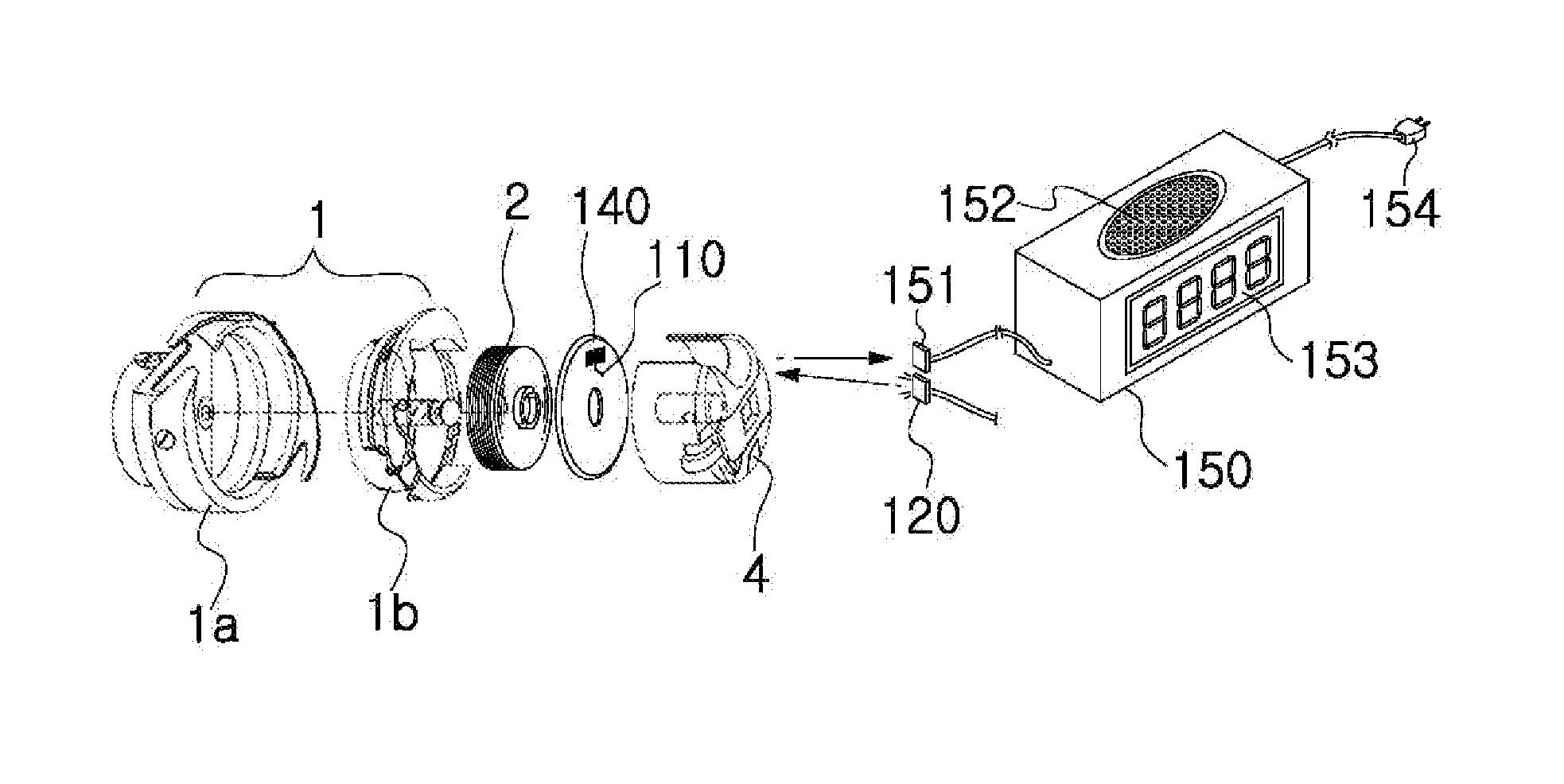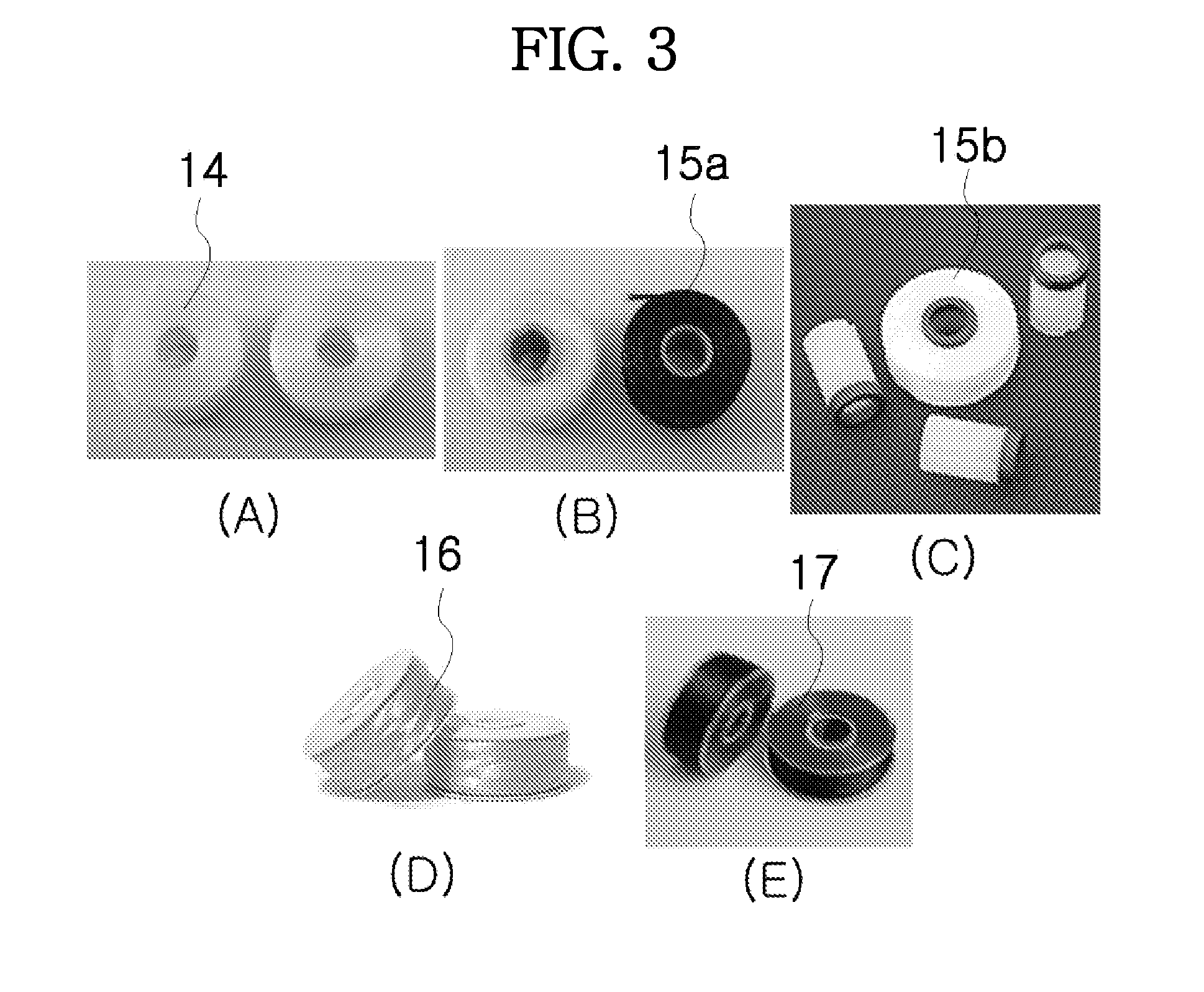Apparatus and lower thread winding-spool for detecting the ending region of lower thread of sewing machine
a technology of sewing machine and end region, which is applied in the field of sewing machines, can solve the problems of production cost increase or productivity decrease, production cost increase, and inferior quality or re-work of sewing operation
- Summary
- Abstract
- Description
- Claims
- Application Information
AI Technical Summary
Benefits of technology
Problems solved by technology
Method used
Image
Examples
first embodiment
[0020]FIG. 1 illustrates an exploded perspective view showing the operating environment of the LTERDA based on the present invention.
[0021]FIG. 2 shows an embodiment of the various components composing the thread bobbin.
[0022]FIG. 3 shows some embodiments of the various types of thread bobbin.
[0023]FIG. 4 illustrates some embodiments of the lower thread ending region and the contact groove.
[0024]FIG. 5 illustrates a perspective side view (A) showing the BC and a plane view (B) showing the inside of the BC.
[0025]FIGS. 6A-6C illustrate some embodiments of the structures for combining the thread bobbin and the TBPP installed in the RTPL.
[0026]FIG. 7A illustrates an embodiment of the process of combining the RTPL and the thread bobbin.
[0027]FIGS. 7B-7C illustrate side views of embodiment of the structure, in which the RTPL and the thread bobbin are combined, showing that the lower thread ending region contacting part (abbreviated as LTERCP in the present invention) changes in position d...
second embodiment
[0038]FIG. 15 illustrates an exploded perspective view showing the operating environment of the LTERDA based on the present invention; wherein a motor rotation sensing unit (abbreviated as MRSU in the present invention) is added.
[0039]FIG. 16 illustrates an embodiment of the MRSU using a magnetic sensor which directly detects the rotation of the SMM.
[0040]FIG. 17 illustrates some embodiments of the structures, in which the LTERCPs are installed on the RTPL, showing that the position of the LCM rotates due to the effect of the PBP of the LTERCPs.
[0041]FIG. 18 shows an embodiment of bobbin having a tube, on a certain location of which one or more contact grooves are formed, and is made as a form surrounding at least a portion of the outer surface of the BSH.
[0042]FIGS. 19A-19C are diagrams representing the logical pattern of the detection signals output from the LRU and the MRSU.
PUM
 Login to View More
Login to View More Abstract
Description
Claims
Application Information
 Login to View More
Login to View More - R&D
- Intellectual Property
- Life Sciences
- Materials
- Tech Scout
- Unparalleled Data Quality
- Higher Quality Content
- 60% Fewer Hallucinations
Browse by: Latest US Patents, China's latest patents, Technical Efficacy Thesaurus, Application Domain, Technology Topic, Popular Technical Reports.
© 2025 PatSnap. All rights reserved.Legal|Privacy policy|Modern Slavery Act Transparency Statement|Sitemap|About US| Contact US: help@patsnap.com



